Just last year I was hoping to write an article very much like Mark Kaufman’s on making custom hardware, and the approach I had in mind was to make the process and the equipment required more accessible. I happen to have acetylene torches, but they’re expensive and not common equipment in the workshops of amateur boatbuilders. I was hoping ordinary propane torches would provide the heat required for using the silver solder I’d been using for years. Silver solder, like the 45% silver brazing alloy Mark uses, creates a very strong and long-lasting bond and is easy to use. I tried using a single propane torch to solder two short pieces of 1/4″ x 1″ brass bar together without success, then I used two torches, and then two torches with the brass surrounded with fire bricks to retain the heat. I couldn’t get it hot enough to melt the solder and I gave up on writing the article. The yellow trigger turns the gas on and ignites it. Turning it clockwise a quarter turn locks it in the off position and depressing the silver-colored button above it locks it in the "on" position. The black knob on the opposite side controls the flow rate of the fuel.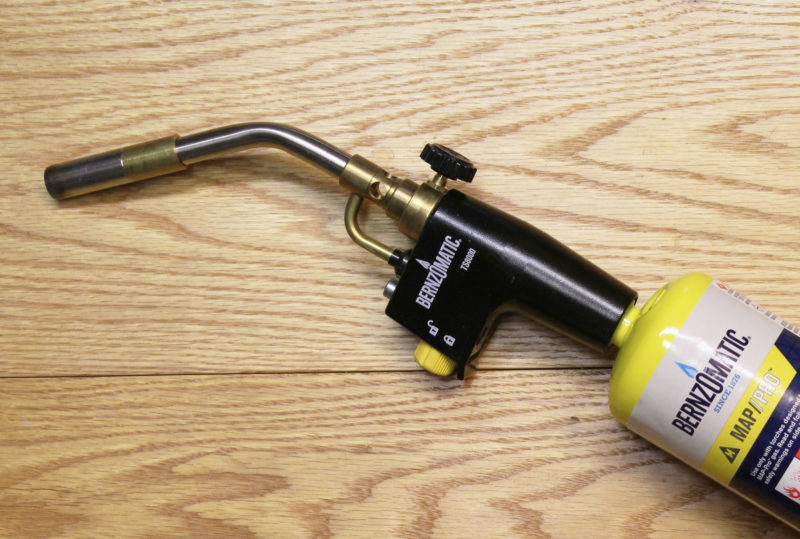 photographs and video by the author
photographs and video by the author
Join The Conversation
We welcome your comments about this article. To include a photo with your remarks, click Choose File below the Comment box.

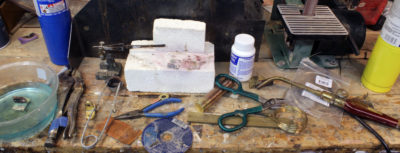



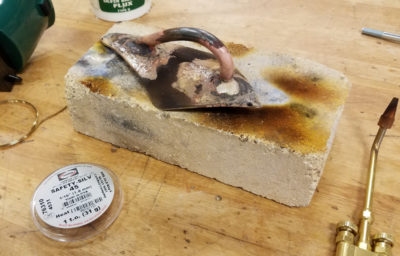

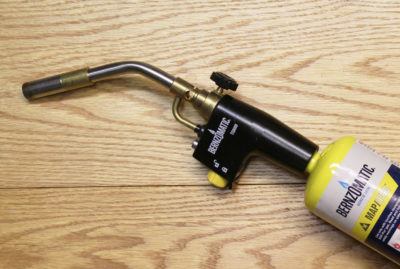
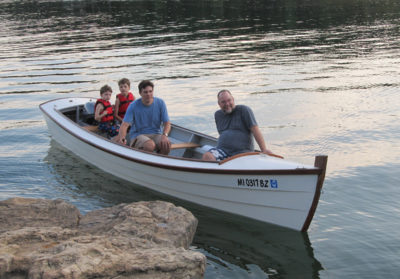

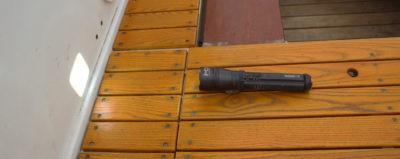
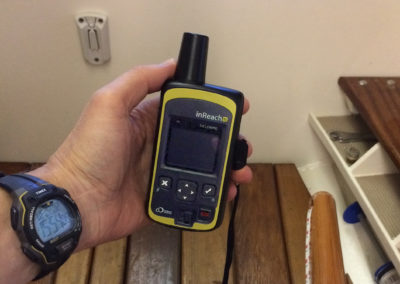

Thank you for the nice article; I’ll be getting one of these torches for sure. A curmudgeonly comment from a physicist: 3730° F is not 3.6% hotter than 3600° F. Temperature doesn’t work that way; it’s not a unit of heat and does not scale linearly The difference of 130 F° is fairly significant (F° is the notation for Fahrenheit temperature differential) and is equivalent to the difference between 0°F and 130°F. (An example: you might intuitively think that 20° F is twice as warm as 10° F, but if you express the same temperatures in degrees Kelvin, describing exactly the same environmental conditions, you get 261° K and 266° K, which scales (inappropriately) to a 1.9% difference.)
You are very correct in inferring that this torch is more effective because it delivers more heat by burning more fuel.
I appreciate the correction. I can see the problem with the math and the various temperature scales. It’s about 64°F here in my office, which I would have expressed as twice as hot as freezing, 32°F, but with the same temperatures expressed in Celsius, 17.7°C is clearly not twice 0°.
A nice article, with some helpful suggestions. About ten years ago, I built pintles and gudgeons for my MacGregor sailing canoe. I can’t remember what material I used, it might have been bronze but more likely it was naval brass. In any case, I used the same tools, a TS-8000 with MAP gas and Safety-Silv 45. I had no experience with brazing of any kind, but found the job pretty straightforward, apart from heating the brass so much that it started to sag as though it was made of butter. I did learn in the process how important it is to support everything thoroughly and to apply the brazing wire sparingly.